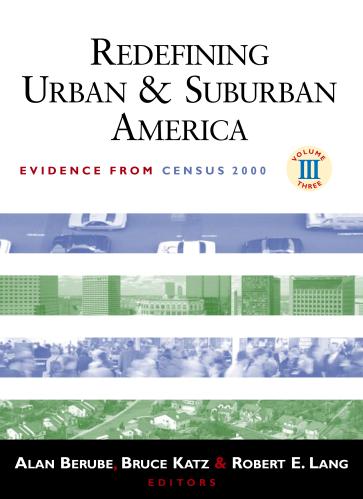In June, we released a report on the rise of “innovation districts,” where leading-edge anchor institutions and companies cluster and connect with start-ups, business incubators and accelerators.
These districts are a response to changes in where people want to live and where innovative companies want to locate—trends that have continued unabated. Population growth in central cities continues its strongest run over the past half-century, especially in those cities with strong, innovation-based economies, such as Seattle, Boston, Denver and Washington, D.C.
Large technology and R&D-intensive firms also continue to announce new offices in dense urban settings. Samsung recently leased an entire six-story building in Manhattan, to be closer to “an innovation-minded workforce.” And in Chattanooga, Volkswagen is building a new plant on the outskirts of the metro area, but plans to locate its R&D unit in the heart of the city’s downtown, closer to potential collaborators like the University of Tennessee at Chattanooga.
Still, the potential of these trends is most apparent in innovation districts that are supported by a network of public, private and civic stakeholders that unite behind a clear growth strategy. Luckily, metropolitan leaders across the country are getting the message.
Last month, Detroit Mayor Mike Duggan established an innovation district taskforce to study the potential designation of a district in the city’s Downtown and Midtown. Henry Ford Health System CEO Nancy Schlichting will lead a working group of stakeholders such as the College for Creative Studies, Wayne State University, TechTown, and local philanthropies including the Kresge Foundation. Many of the same stakeholders are among the 12 public and private sources of funding for the new M1 light rail line, which broke ground on July 29, and will reconnect the Downtown to Midtown.
The Chicago Planning Commission similarly started the formal recognition of that city’s first innovation district, approving a development plan for the Fulton Market Innovation District earlier this month. Their designation comes ahead of Google’s arrival in the district, planned for 2016, which the city hopes to leverage into the growth of a technology cluster.
Finally, in late July, the City Council in Fremont, Calif. approved a long-standing plan to develop an innovation district around an under-construction Bay Area Rapid Transit expansion station. In addition to the connectivity boost from the BART expansion, the “Warm Springs Innovation District” is anchored by Tesla Motors, a leading technology and manufacturing company that is fully embracing the “open innovation” economy at the heart of many innovation districts. (Tesla recently made all of its patents open-source.)
The potential of this type of development to supercharge urban revitalization—centered on distinct innovation assets—can be seen in Buffalo. A little over a decade after the Buffalo Niagara Medical Campus was brought downtown, the district has seen broad revival, with $400 million in private development and up to 20,000 jobs projected by 2017.
Innovation districts aren’t a one-size-fits-all approach to economic growth, so it’s an encouraging sign to see places develop plans tailored to their distinct starting points. We hope this is just the beginning of cities planning for a new geography of innovation in our economy.
The Brookings Institution is committed to quality, independence, and impact.
We are supported by a diverse array of funders. In line with our values and policies, each Brookings publication represents the sole views of its author(s).










Commentary
Innovation Districts Catch On
August 5, 2014